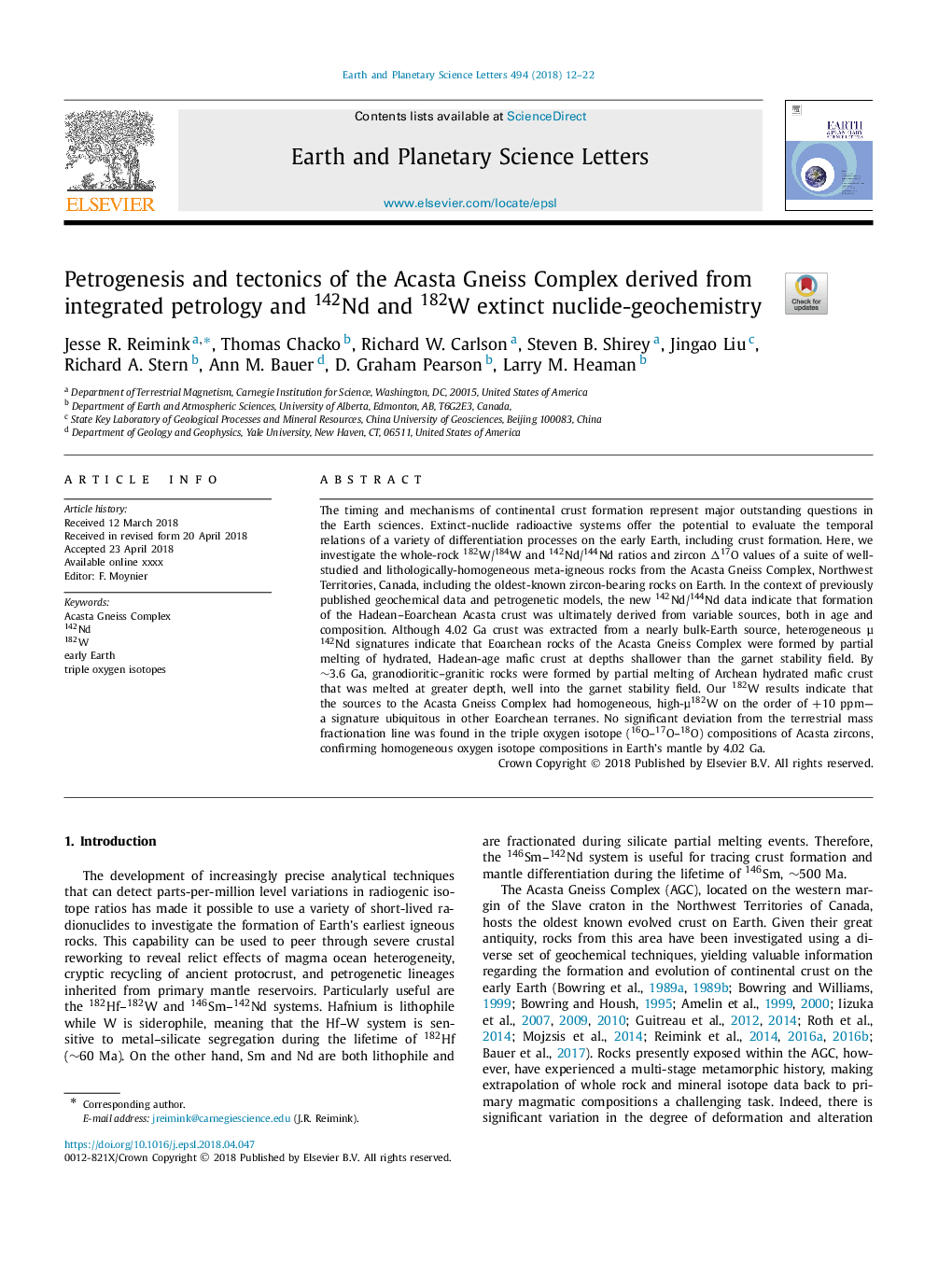| کد مقاله | کد نشریه | سال انتشار | مقاله انگلیسی | نسخه تمام متن |
|---|---|---|---|---|
| 8906817 | 1634662 | 2018 | 11 صفحه PDF | دانلود رایگان |
عنوان انگلیسی مقاله ISI
Petrogenesis and tectonics of the Acasta Gneiss Complex derived from integrated petrology and 142Nd and 182W extinct nuclide-geochemistry
دانلود مقاله + سفارش ترجمه
دانلود مقاله ISI انگلیسی
رایگان برای ایرانیان
کلمات کلیدی
موضوعات مرتبط
مهندسی و علوم پایه
علوم زمین و سیارات
علوم زمین و سیاره ای (عمومی)
پیش نمایش صفحه اول مقاله

چکیده انگلیسی
The timing and mechanisms of continental crust formation represent major outstanding questions in the Earth sciences. Extinct-nuclide radioactive systems offer the potential to evaluate the temporal relations of a variety of differentiation processes on the early Earth, including crust formation. Here, we investigate the whole-rock 182W/184W and 142Nd/144Nd ratios and zircon Î17O values of a suite of well-studied and lithologically-homogeneous meta-igneous rocks from the Acasta Gneiss Complex, Northwest Territories, Canada, including the oldest-known zircon-bearing rocks on Earth. In the context of previously published geochemical data and petrogenetic models, the new 142Nd/144Nd data indicate that formation of the Hadean-Eoarchean Acasta crust was ultimately derived from variable sources, both in age and composition. Although 4.02 Ga crust was extracted from a nearly bulk-Earth source, heterogeneous μ142Nd signatures indicate that Eoarchean rocks of the Acasta Gneiss Complex were formed by partial melting of hydrated, Hadean-age mafic crust at depths shallower than the garnet stability field. By â¼3.6 Ga, granodioritic-granitic rocks were formed by partial melting of Archean hydrated mafic crust that was melted at greater depth, well into the garnet stability field. Our 182W results indicate that the sources to the Acasta Gneiss Complex had homogeneous, high-μ182W on the order of +10 ppm-a signature ubiquitous in other Eoarchean terranes. No significant deviation from the terrestrial mass fractionation line was found in the triple oxygen isotope (16O-17O-18O) compositions of Acasta zircons, confirming homogeneous oxygen isotope compositions in Earth's mantle by 4.02 Ga.
ناشر
Database: Elsevier - ScienceDirect (ساینس دایرکت)
Journal: Earth and Planetary Science Letters - Volume 494, 15 July 2018, Pages 12-22
Journal: Earth and Planetary Science Letters - Volume 494, 15 July 2018, Pages 12-22
نویسندگان
Jesse R. Reimink, Thomas Chacko, Richard W. Carlson, Steven B. Shirey, Jingao Liu, Richard A. Stern, Ann M. Bauer, D. Graham Pearson, Larry M. Heaman,